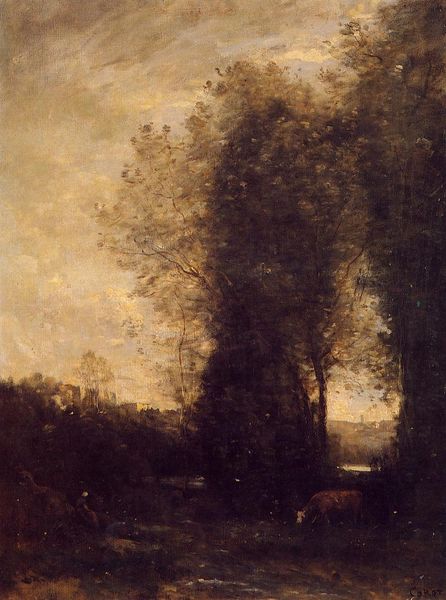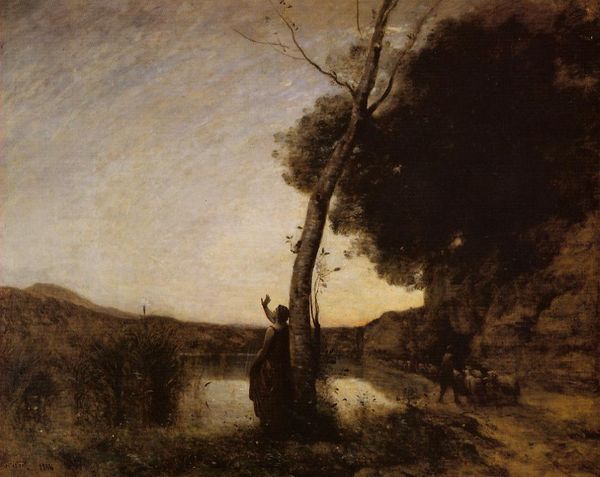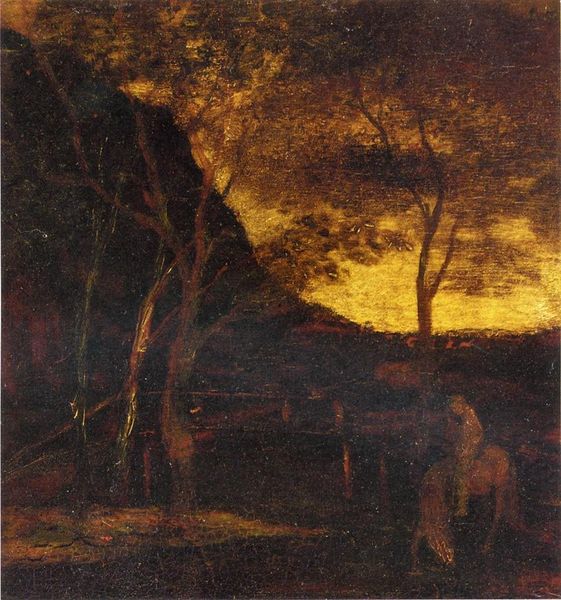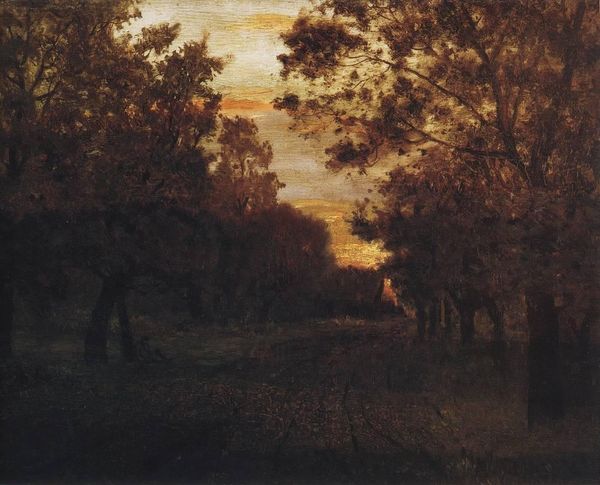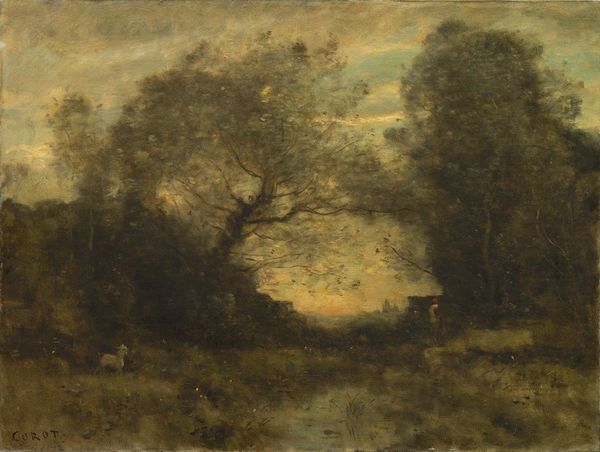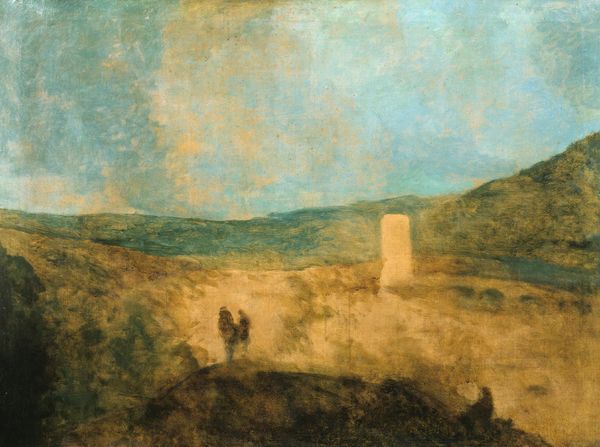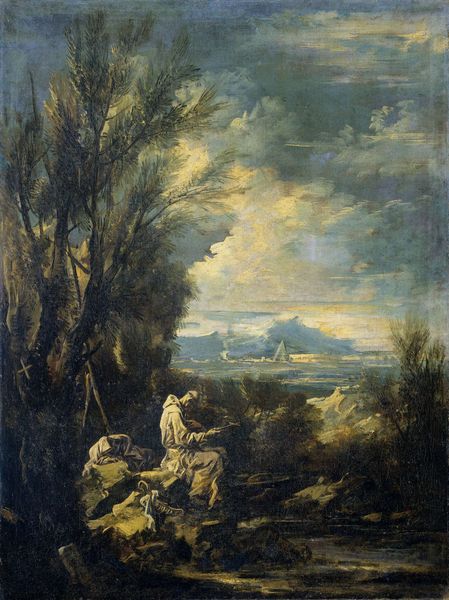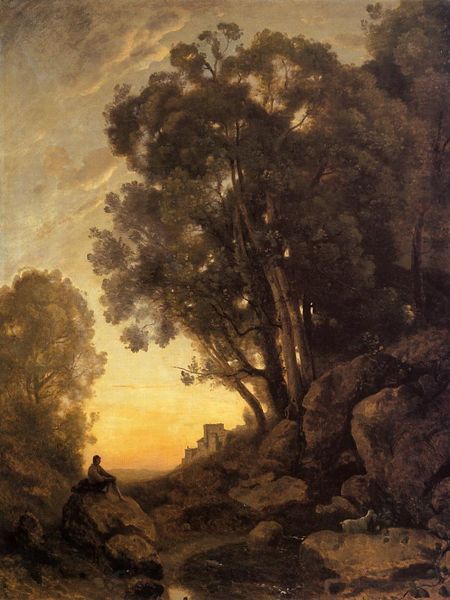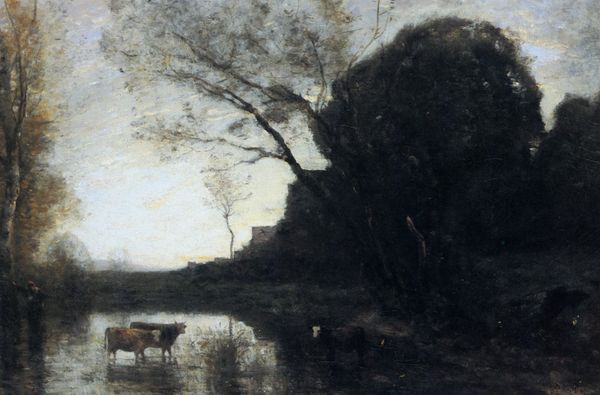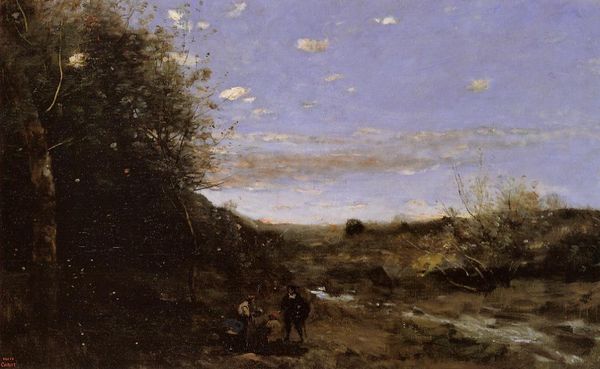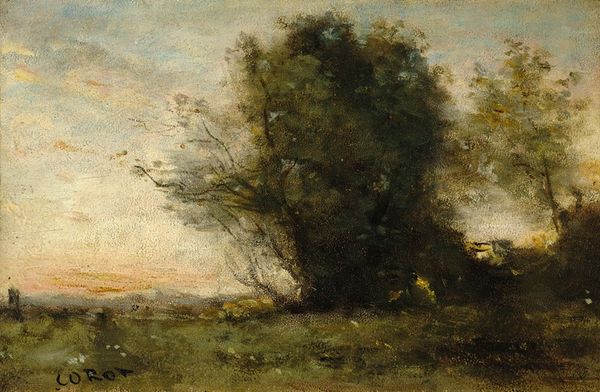
Copyright: Public domain
Curator: What a melancholic piece. Is this the burden of being a modern hero? Editor: This is Albert Pinkham Ryder's oil painting, "Childe Harold's Pilgrimage," created in 1895. The title is pulled from Lord Byron's poem, a romantic meditation on travel, disillusionment, and the search for meaning. Curator: The rough brushstrokes lend it an air of unfinishedness. Almost as if the story is still in progress. Is the horseman meant to be Harold himself, then? The wanderer? Editor: It's generally understood that the rider represents Harold, though Ryder avoids literal illustration. Instead, he captures the mood, the sense of a solitary figure against a vast, indifferent landscape. Think about the romantic symbolism: The journey, the individual versus nature... Curator: Absolutely, and that heavy darkness around the rider enhances his solitude, creating an intense, intimate atmosphere despite the expansive landscape. But does the public remember Byron now? How does Ryder use that memory? Editor: It speaks to Ryder’s interest in creating timeless themes. Harold, the figure of the wandering hero became an archetypal one for his time. The pilgrimage then isn't simply Byron's tale; it becomes about any quest, any search for meaning. That quest certainly speaks to the psychology of the 19th century, marked as it was by scientific progress and social upheaval, creating a hunger for significance. Curator: So it becomes about an experience as universal to the public then as it was rooted in its own context. I suppose it makes sense why the work endures. Editor: Indeed, Ryder touches upon something deeply human within the frame of romantic idealism, which provides its enduring appeal. Curator: It makes me reconsider how painting like this function to capture not just image but lasting psychological states within artistic expression.
Comments
No comments
Be the first to comment and join the conversation on the ultimate creative platform.

